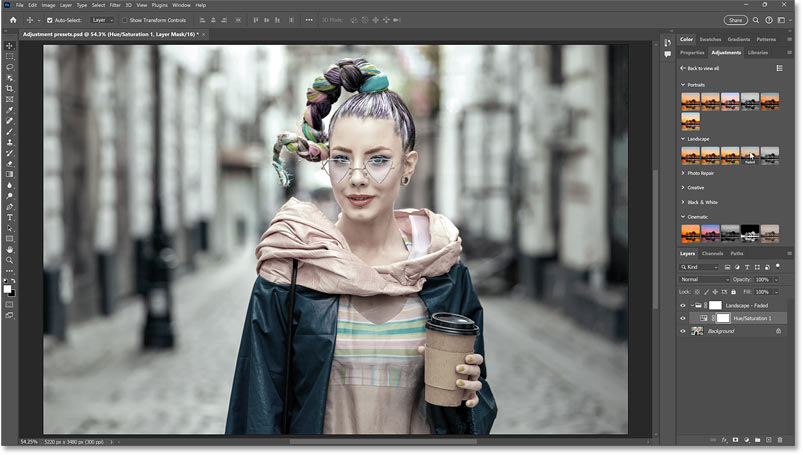Mastering the Art of Image Refinement: A Deep Dive into Using Adjustment Layer Presets in Photoshop

Introduction:
Adobe Photoshop, a stalwart in the realm of digital image editing, continually evolves to meet the dynamic needs of photographers, designers, and visual artists. Among its myriad features, adjustment layers stand out as powerful tools for fine-tuning images. In this comprehensive exploration, we delve into the intricate world of using adjustment layer presets in Photoshop. From understanding the fundamentals to unlocking advanced techniques, this article aims to guide users through the process of harnessing the full potential of adjustment layer presets for unparalleled image refinement.
Understanding Adjustment Layers:
Before delving into the intricacies of adjustment layer presets, it’s crucial to grasp the concept of adjustment layers themselves. Unlike direct adjustments to image pixels, adjustment layers allow users to apply modifications non-destructively. This means that changes are not permanently applied to the original image, providing a flexible and reversible editing environment.
- Types of Adjustment Layers:
- Photoshop offers a diverse range of adjustment layers, each catering to specific aspects of image enhancement. These include but are not limited to Levels, Curves, Hue/Saturation, Color Balance, and Gradient Map.
- Non-Destructive Editing Workflow:
- Adjustment layers act as virtual filters placed above the image layer, influencing the layers below without altering the original pixel data. This non-destructive workflow ensures that users can revisit and modify adjustments at any point during the editing process.
Introduction to Adjustment Layer Presets:
Adjustment layer presets serve as preconfigured sets of adjustments that users can apply with a single click. These presets not only streamline the editing process but also provide a foundation for creativity and consistency in image manipulation.
- Accessing Adjustment Layer Presets:
- To access adjustment layer presets, navigate to the “Adjustments” panel in Photoshop. Here, users can find a variety of preset options for each adjustment layer type. Additionally, custom presets created by users or downloaded from external sources can be added to enhance the available library.
- Creating Custom Presets:
- Photoshop allows users to create their own adjustment layer presets based on specific editing parameters. This feature is particularly valuable for photographers or designers who frequently apply similar adjustments across various projects.
Utilizing Adjustment Layer Presets for Efficient Editing:
The real power of adjustment layer presets lies in their ability to expedite the editing process without compromising on precision. Below are several ways users can leverage adjustment layer presets for efficient and effective image refinement.
- Quick Color Grading:
- Adjustment layer presets for Color Balance and Gradient Map offer swift solutions for color grading. Photographers can experiment with various color schemes, instantly transforming the mood and tone of their images.
- Fine-Tuning Exposure with Curves and Levels:
- Presets for Curves and Levels adjustment layers facilitate rapid adjustments to exposure, contrast, and tonal balance. Users can select presets that emulate popular film styles or create their own for consistent editing across multiple images.
- Streamlining Retouching with Hue/Saturation:
- For retouching projects, adjustment layer presets for Hue/Saturation can be invaluable. Users can target specific color ranges, making it easy to enhance or desaturate elements without affecting the entire image.
- Efficient Workflow in Batch Processing:
- Adjustment layer presets become particularly powerful when applied in batch processing. By selecting multiple images and applying consistent presets, users can maintain a cohesive look across an entire photo series.
Advanced Techniques with Adjustment Layer Presets:
Beyond the basics, advanced users can explore more intricate techniques that push the boundaries of creative expression.
- Creating Complex Grading Looks:
- Combine multiple adjustment layer presets to create complex grading looks. Experimenting with opacity and blending modes adds depth and nuance to the final result.
- Dynamic Presets with Smart Objects:
- Incorporate adjustment layer presets into Smart Objects for dynamic editing. This allows users to make changes to the preset at any time, maintaining flexibility in the editing process.
- Animating Presets for Dynamic Edits:
- In video editing projects, adjustment layer presets can be animated for dynamic edits over time. This technique brings a cinematic quality to motion graphics and video production.
Conclusion:
In the expansive realm of Adobe Photoshop, the integration of adjustment layer presets emerges as a potent ally for image refinement. From simplifying routine tasks to fostering a platform for creative experimentation, adjustment layer presets elevate the editing experience for users of all skill levels. This article has sought to unravel the intricacies of using adjustment layer presets, offering insights into their application, customization, and advanced techniques. As users continue to navigate the ever-evolving landscape of digital imaging, mastering the art of adjustment layer presets becomes an indispensable skill for achieving unparalleled precision and creativity in Photoshop.




